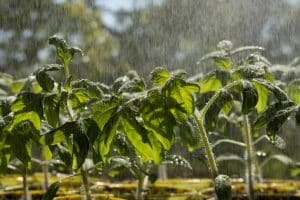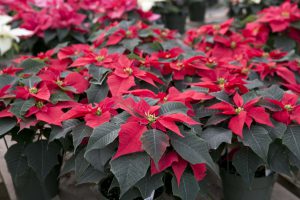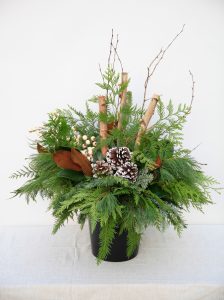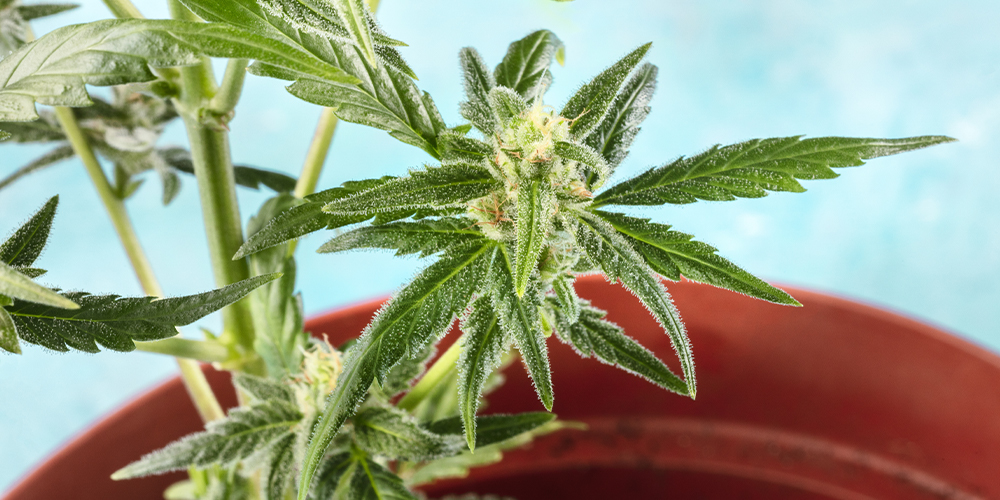
Growing cannabis at home is becoming increasingly popular in Edmonton, but it’s certainly a more complicated undertaking than your average houseplant, and there are some common problems you may encounter. If you’re considering growing your own, I put together this quick guide on cannabis conundrums to be prepared for, so you can tackle them like a pro.
Typical Cannabis Problems Home Growers Might Face
Cannabis Plant Pests
Insects and other pests are likely to pop up at some point, even with indoor plants! They’re pretty skilled at sneaking their way in, hiding amongst the plant leaves, and then suddenly multiplying. Make sure to keep a close watch on your plants or they could become overrun with bugs in a matter of days!
Watching out for discoloration signs, holes in leaves, fine webbing, and swarming bugs can help you identify and treat the issue in a timely way. The earlier you catch it, the easier it is to beat with natural, chemical-free methods.
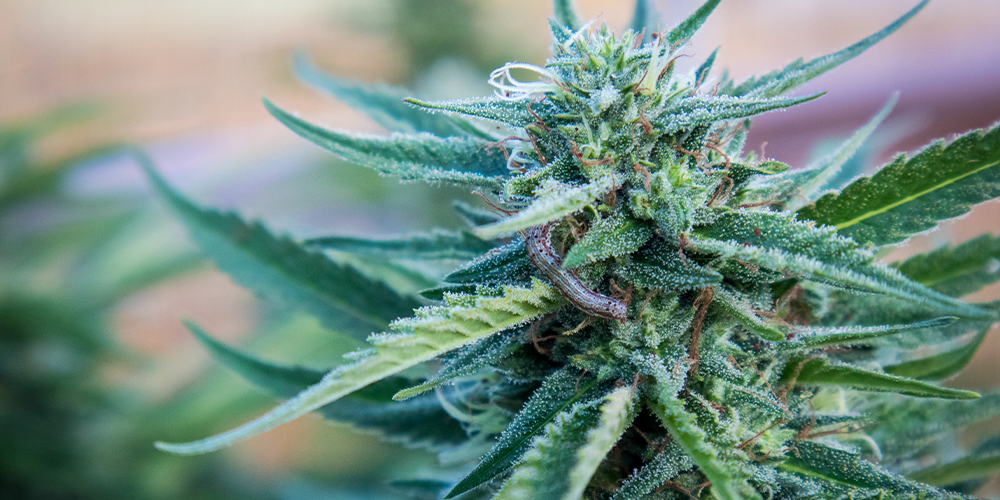
Here’s a list of some of the pests you should keep an eye out for:
- Spider Mites
- Aphids
- Fungus Gnats
- White Flies
- Thrips
- Cutworms and caterpillars
- Leaf miners
- Mice
To learn more about identifying the signs of pest infestation and the best ways to treat them without damaging your plants, check out our guide to troubleshooting pest issues!
Nutrient Deficiencies
If you’re noticing discoloration of the leaves of your plant, but there are no signs of insects or disease, and all other water and heat conditions are optimal, then you may be dealing with a nutrient deficiency.
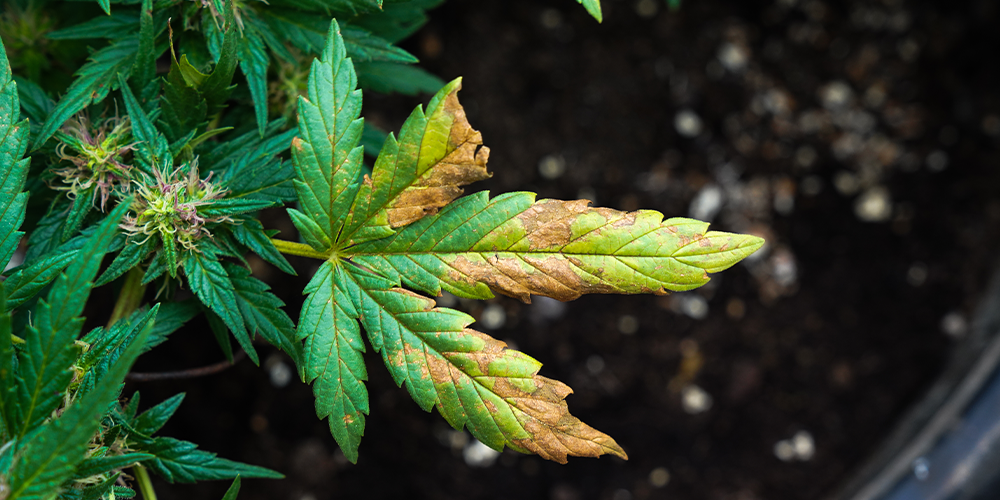
Soil is a complex material full of millions of microbes and all sorts of different vitamins and minerals, but over time it can become depleted of these nutrients as your plants soak them up and water flushes them out. A soil test kit will tell you which nutrients are lacking from your soil so you can add them in with fertilizer or other amendments.
There are many different minerals required for your plants to develop properly, like calcium, magnesium, copper, potassium, zinc, nitrogen, and more. While you can sometimes identify the required nutrient based on the type of discoloration you see in the leaves, oftentimes, the symptoms may look similar, so a soil test will clear up any uncertainty.
To avoid nutrient deficiency, you should use fertilizer, but you need to use different formulas depending on the growth stage. Before your plants start flowering, use a fertilizer with an NPK ratio of 20-5-10, and when it’s flowering, switch to a 5-30-20 formula.
Diseases
Plants release a lot of moisture, which increases the humidity in their environment. This can create ideal conditions for bacteria and fungus to breed. If you have a single plant in a room with good air circulation, you probably shouldn’t have any disease issues, but since many folks like to grow their plants in a small, enclosed space to control temperature, you might need to use a dehumidifier to keep the air from getting muggy.
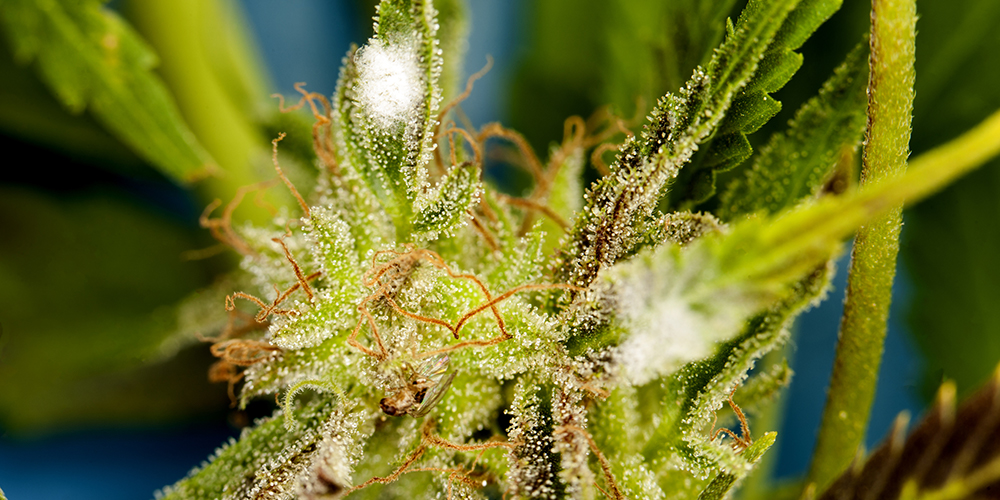
Here are some plant diseases that could pop up and what they look like:
- Powdery Mildew (fine, white powder coating the plant)
- Leaf Septoria (brown spots)
- Bud Rot (mold growing inside leaf buds)
- Algae (green, brown, black, red, or blue growth developing on the potting medium of hydroponic plants)
- Verticillium wilt (greyish brown leaves, a brown stem base and wilting)
- Fusarium wilt (yellow and brown leaves, curling upward)
Some diseases are easier to treat with organic methods, whereas other, more aggressive diseases need more heavy-duty fungicides. If you see any signs of disease, isolate your plant from any other nearby plants, and remove all affected plant parts using shears disinfected with alcohol. Dispose of all the infected parts in a sealed bag in the garbage so the disease won’t continue to spread, and then treat your plant with your choice of fungicide.
Environmental Stress
Temperature, light levels, and humidity are some of the trickiest parts to control when growing cannabis because the plant’s needs can change depending on its stage of development.
Seedlings and clones require high humidity and temperatures between 20″“25 °C.
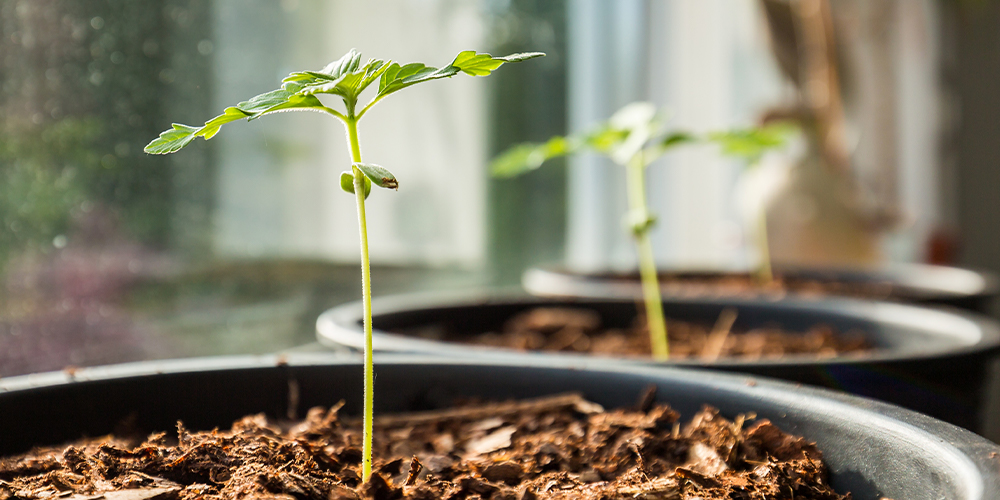
The vegetative stage requires similar temperatures, and younger plants thrive on high humidity but will do better with moderate humidity as they mature.
When your plant begins to flower, keep it in an area with low humidity, and make sure the temperature never exceeds 28 °C. At night when it’s dark, it helps if the room is cooler than during the day, as this helps to facilitate better trichome production.
High temperatures and inadequate light can both lead to stretching””this is what happens when your plants’ stems become tall and skinny, making them weak and wobbly. To ensure your plant has a thick, sturdy stem, put it under a metal halide lamp during its early development. The blue light it releases is great for strong stems, whereas red and orange light wavelengths can cause stretching.
Though it may take a bit more upkeep and close monitoring than your typical gardening endeavour, growing your own cannabis certainly has its perks! If you’re up for the challenge, Salisbury has tons of tools and supplies to help your project go smoothly. Don’t hesitate to call us or visit us at the greenhouse to speak with one of our experts!

